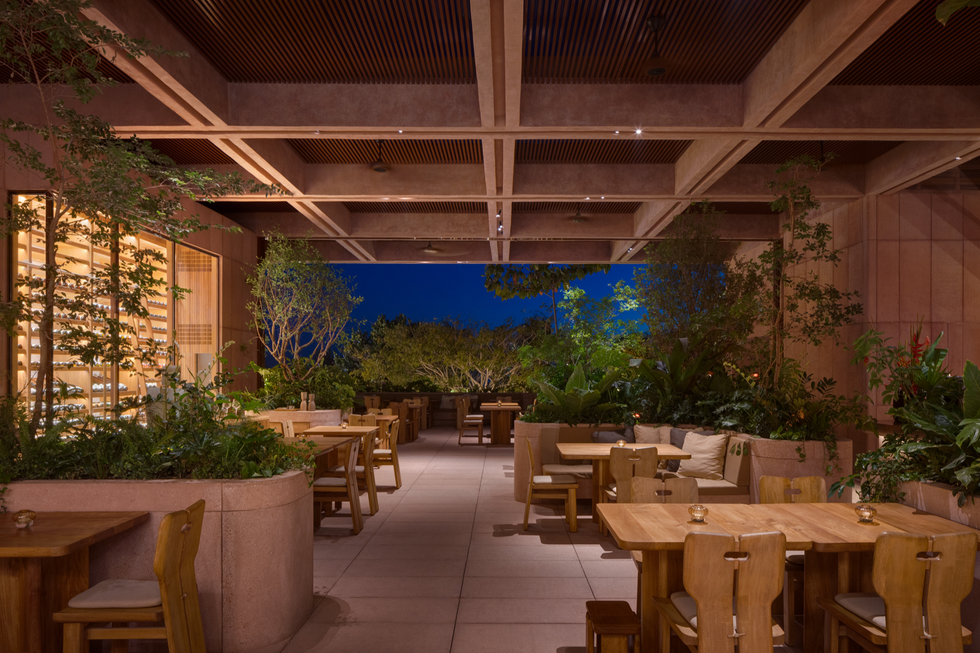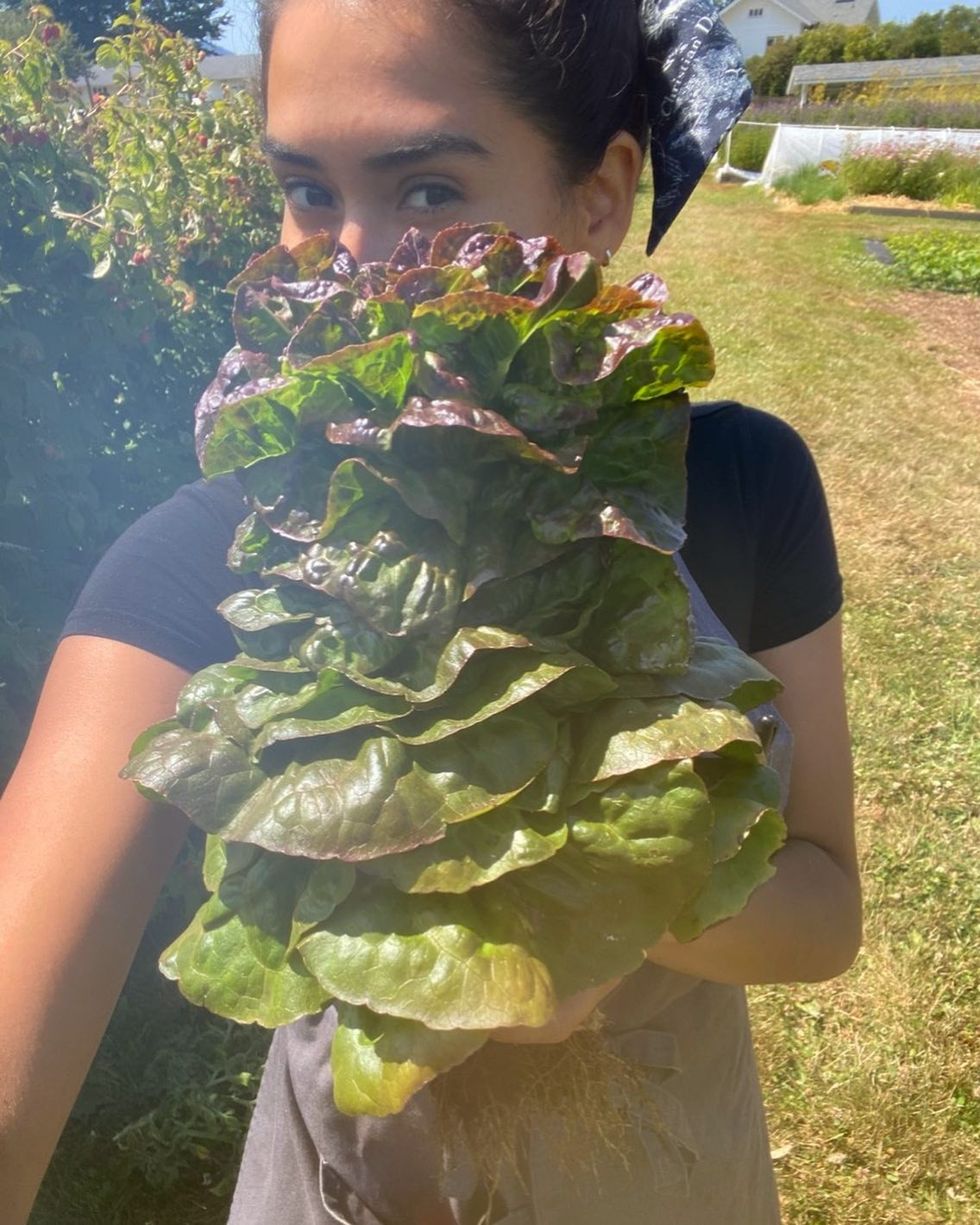Daniela Soto-Innes Has Good Taste
The Margiela-clad chef behind buzzy restaurant Rubra lets us in on her creative process.
Fashion and food have always been intertwined. In Good Taste, we spotlight the most stylish people in the culinary worlds, from chefs to food artists.
When it comes to redefining what it means to be a chef, Daniela Soto-Innes is in a league of her own. Known for her infectious energy, creativity, and deep respect for Mexican culinary traditions, she’s the kind of chef who makes you rethink what a restaurant experience can be. At just 25, she was named the James Beard Foundation’s Rising Star Chef of the Year, and not long after, became the youngest woman ever crowned World’s Best Female Chef by The World’s 50 Best Restaurants. As the former chef de cuisine of New York City’s celebrated Cosme, she helped bring modern Mexican cuisine to the global stage through a playful and community-first lens.
Now, she’s entering a new chapter with Rubra, her intimate and wildly creative restaurant in Punta Mita, Mexico. This fall, she’ll be sharing that vision with a wider audience through a special Marriott Bonvoy Award-Winning Dining Series experience, taking place at W Punta de Mita November 14–16. Guests will enjoy everything from an herbal mixology class with Daniela to a four-course tasting menu under the stars. "We just want to have fun and teach everyone what we’re doing," she says.
Ahead of the event, we caught up with the stylish chef to talk about what makes Rubra so personal, how she keeps her creativity flowing and why she identifies as a creative versus a chef.

Michael Kleinberg
Let’s talk about your new restaurant, Rubra. How does it feel different from your previous projects, and what was the vision behind it?
Daniela Soto-Innes: "Rubra is kind of like a love letter to what’s happening in my life right now—a collection of all the travels and countries I’ve lived in. I wanted this place to feel like a womb, like a marine cave—something really special to where we are, which is the Mexican Pacific. It’s about appreciating art and tropical Mexican culture. I think we were able to achieve all of these different points in one place."
You mentioned the importance of regionality, but also moving beyond stereotypes around Mexican cuisine. How do you balance honoring tradition with pushing creative boundaries?
"I’m a fan of both traditions and stereotypes in Mexican gastronomy and culture—sometimes they exist for a reason. But I’m more of a disruptive creative. I like to innovate and make something that probably hasn’t been done before, while still respecting the culture and everything around us. Rubra is different because it doesn’t just tell the story of the Mexican Pacific—it tells the story of our team and every single member in it. That makes it extra special."
You often describe yourself as a creative, not just a chef. How does that mindset show up in your work, especially visually?
"For me, ingredients are everything. Food is fast—the expression goes away seconds after you plate it—but the memory stays. That memory is tied to the visuals, the smell, the taste. You have to be good at all three, and do it in a way that feels real to where you are. Here, we grow our own passion fruit. We use the flowers, leaves—even the fruit itself—as part of the plating. Cooking is supposed to be fun. We listen to music while we cook and we just enjoy the process.
The reason I say “creative” is because I don’t want anyone who works with me to feel like they only have one choice in the restaurant. If you’re in the restaurant, you can design speakers, make candles, work with lighting—we teach all of that at Rubra."
How do you think food and fashion both serve as expressions of identity or storytelling?
"Both are languages of emotion and memory. The way you cook or dress says what you value, how you see the world, and how you want others to feel around you. I think food and fashion share a kind of intimacy; they both touch the body and the senses. They remind us that beauty can be functional, and that simplicity, when done with depth, can move people."
You’ve collaborated with Maison Margiela and other fashion houses. What parallels do you see between building a dish and creating a collection?
"Both are forms of storytelling through material. In fashion, it’s fabric and silhouette; in cooking, it’s fire and flavor. The process is the same: you start with an emotion, a texture, a memory, and then strip away everything unnecessary until it feels honest. Collaboration for me is about dialogue, not trends or expectations, but a shared curiosity for transformation."
Are there any designers or brands you feel especially connected to, either aesthetically or philosophically?
"I'm drawn to brands that understand silence as luxury: Hermès, Lemaire, Maison Margiela, Cartier, Y’s, and to the honesty of materials and craft. I also admire Mexican brands that work with artisans and natural fibers, such as Carla Fernández, Suki Palomina, Yakampot, and Maison Alma. What unites them is a respect for process and imperfection, a quiet sophistication rooted in culture and time."
You’ve received a lot of acclaim over the years. Has that pressure ever affected your creativity, and how do you stay grounded?
"I try to stay really grateful that I get to express my ideas and my team’s vision. I grew up playing sports in a family with three girls—I’m the youngest—so I never got anything new. The accolades aren’t just for me; they’re for the team.
Those awards are magnets for talent, a way to connect with people I might not otherwise meet. As long as I stay grounded—I still chop onions and garlic just like I did on my first day—I know my passion won’t go away. If I walked into a kitchen in the Middle East, I’d be the new kid on the block again. So yes, I to always remind myself of how grateful I'm for what I have and to just keep swimming."
Outside of food, what inspires your creativity? Any rituals, interests, or other passions that help keep the ideas flowing?
"I have a lot of energy—I don’t know how to not do stuff! I love fashion. One of my dreams is to have my own clothing line. We actually collaborate with designers and artists to create our uniforms at Rubra. We have 27 different pieces that I’ve designed with different desginers—dresses, shorts, hats—so everyone can wear what they want.
When I start to feel bored or anxious, it usually means I’m not looking around at everything I could be doing. I just take action—start something new—and that keeps me going."
How would you describe your personal style, both in and out of the kitchen?
"Fresh and lively, but calm, clean, and sharp. I like simplicity that carries intention. Clothes, like food, should make you feel grounded and free at the same time. In the kitchen, I gravitate toward practicality with personality, uniforms that breathe, that move. Outside, I love timeless pieces that age beautifully and carry stories in their details."







